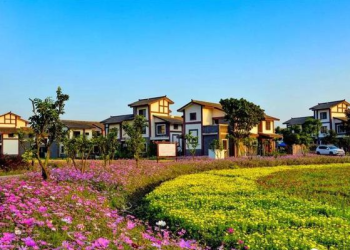Introduction
Incorporating plants into home decor is more than just a trend – it’s a timeless practice that adds life, color, and vitality to indoor spaces. From small succulents to lush tropical greens, indoor plants have the power to transform any room into a vibrant oasis. In this article, we’ll explore the myriad benefits of incorporating plants into home decor and share practical tips for creating your own indoor garden sanctuary.
Choosing the Right Plants
When selecting plants for your indoor space, it’s essential to consider factors such as lighting conditions, humidity levels, and maintenance requirements. Opt for plants that thrive indoors and are well-suited to the specific environment of your home. Low-maintenance options like snake plants and pothos vines are perfect for beginners and busy individuals looking to add greenery to their space without a lot of fuss.
Placement and Arrangement
Placement is key when it comes to incorporating plants into home decor. Maximize natural light by placing plants near windows or in well-lit areas of your home. Create focal points with plants by clustering them together in groups of varying heights and textures. Experiment with different arrangements to find the perfect balance that enhances the overall aesthetic of your space.
Types of Indoor Plants
Indoor plants come in a wide range of shapes, sizes, and varieties, making it easy to find the perfect plants for your home decor style. Succulents and cacti are popular choices for their low-maintenance nature and unique shapes, while leafy greens like pothos and philodendrons add a touch of elegance and air-purifying benefits to any room.
Planters and Containers
Choose planters and containers that complement your home decor style while also providing adequate drainage for your plants. Ceramic pots, woven baskets, and glass terrariums are all popular options for showcasing indoor plants. Get creative with DIY planters using repurposed materials or incorporate plants into unexpected containers like mason jars or vintage tea tins.
Vertical Gardens
Maximize space and add visual interest to your home decor with vertical gardens. Utilize walls and vertical surfaces to create living art installations using a variety of plant species. Install living walls indoors to bring the beauty of nature into your home while also purifying the air and reducing stress.
Caring for Indoor Plants
Proper care is essential for maintaining healthy indoor plants. Water plants regularly, taking care not to overwater or underwater them. Ensure adequate drainage in plant containers to prevent root rot and mold. Fertilize plants as needed and prune them regularly to encourage healthy growth and prevent overcrowding.
Health and Wellness Benefits
In addition to their aesthetic appeal, indoor plants offer a host of health and wellness benefits. Plants purify indoor air by removing toxins and pollutants, creating a healthier living environment for you and your family. Studies have also shown that spending time around plants can reduce stress, boost mood, and increase productivity.
Decorating with Plants
Get creative with styling shelves, mantels, and other surfaces by incorporating plants into your decor. Mix and match plant varieties to create dynamic displays that reflect your personal style. Use plants to add color, texture, and visual interest to different rooms in your home, from the living room to the bathroom.
Seasonal Decor
Adapt your plant decor to suit the changing seasons by incorporating seasonal accents and arrangements. Create holiday and festive displays using seasonal plants like poinsettias and evergreen branches. Rotate plants seasonally to ensure they receive adequate light and temperature conditions for optimal growth.
Plant Decor Trends
Stay on-trend with the latest plant decor styles and design principles. Embrace biophilic design, which emphasizes the connection between humans and nature, by incorporating plants into every room of your home. Experiment with modern plant decor styles like minimalism and Scandinavian design to create sleek and sophisticated indoor garden spaces.
DIY Plant Projects
Get hands-on with DIY plant projects that allow you to express your creativity and personalize your plant decor. Create miniature gardens and terrariums using glass containers and miniature accessories. Experiment with plant propagation and care crafts to learn more about plant care and cultivation.
Plant Care Tips
Troubleshoot common plant issues such as yellowing leaves, pests, and overwatering with practical plant care tips. Learn how to identify signs of stress or illness in your plants and take corrective action to restore their health and vitality. Develop a regular plant care routine to ensure your indoor garden thrives year-round.
Personalizing Your Plant Decor
Make your plant decor uniquely yours by choosing plants that reflect your personality and lifestyle. Mix and match plant varieties to create interesting contrasts and textures. Experiment with different combinations of plants, containers, and arrangements to create a truly personalized indoor garden sanctuary.
Conclusion
Incorporating plants into home decor is a simple yet powerful way to bring the beauty of the outdoors into your living space. From improving air quality to reducing stress and boosting mood, indoor plants offer a myriad of benefits for both physical and emotional well-being. So why wait? Start transforming your space today with the beauty and vitality of indoor plants.

FAQs After The Conclusion
- What are the best low-maintenance plants for beginners?
- Beginner-friendly plants include snake plants, pothos vines, and spider plants, which require minimal care and thrive in a variety of environments.
- How often should I water my indoor plants?
- The frequency of watering depends on factors such as plant type, environmental conditions, and container size. In general, water plants when the top inch of soil feels dry to the touch.
- Can indoor plants survive in low-light conditions?
- Yes, there are several indoor plants that can tolerate low-light conditions, such as peace lilies, zz plants, and Chinese evergreens. These plants may not thrive as vigorously as they would in brighter light but can still survive with proper care.
- What are some common signs that my plants need attention?
- Signs of plant stress or illness include yellowing leaves, wilting, brown tips, and pest infestations. Monitor your plants regularly and address any issues promptly to prevent further damage.
- Are there any plants that are toxic to pets?
- Yes, some indoor plants can be toxic to pets if ingested. Common toxic plants include lilies, philodendrons, and pothos vines. Always research plants before bringing them into a home with pets and keep them out of reach.
- How can I prevent overwatering my plants?
- Overwatering is a common issue that can lead to root rot and other problems. To prevent overwatering, allow the top inch of soil to dry out between waterings and ensure that containers have adequate drainage.
- Can I use artificial plants as an alternative to live plants?
- While artificial plants require less maintenance, they do not offer the same air-purifying benefits or aesthetic appeal as live plants. Consider using a combination of both live and artificial plants to achieve the desired look and feel in your home.
- Where can I find more information about caring for specific indoor plants?
- There are many resources available online, including plant care guides, forums, and social media groups dedicated to indoor gardening. Additionally, local nurseries and botanical gardens may offer workshops and classes on plant care and cultivation.












